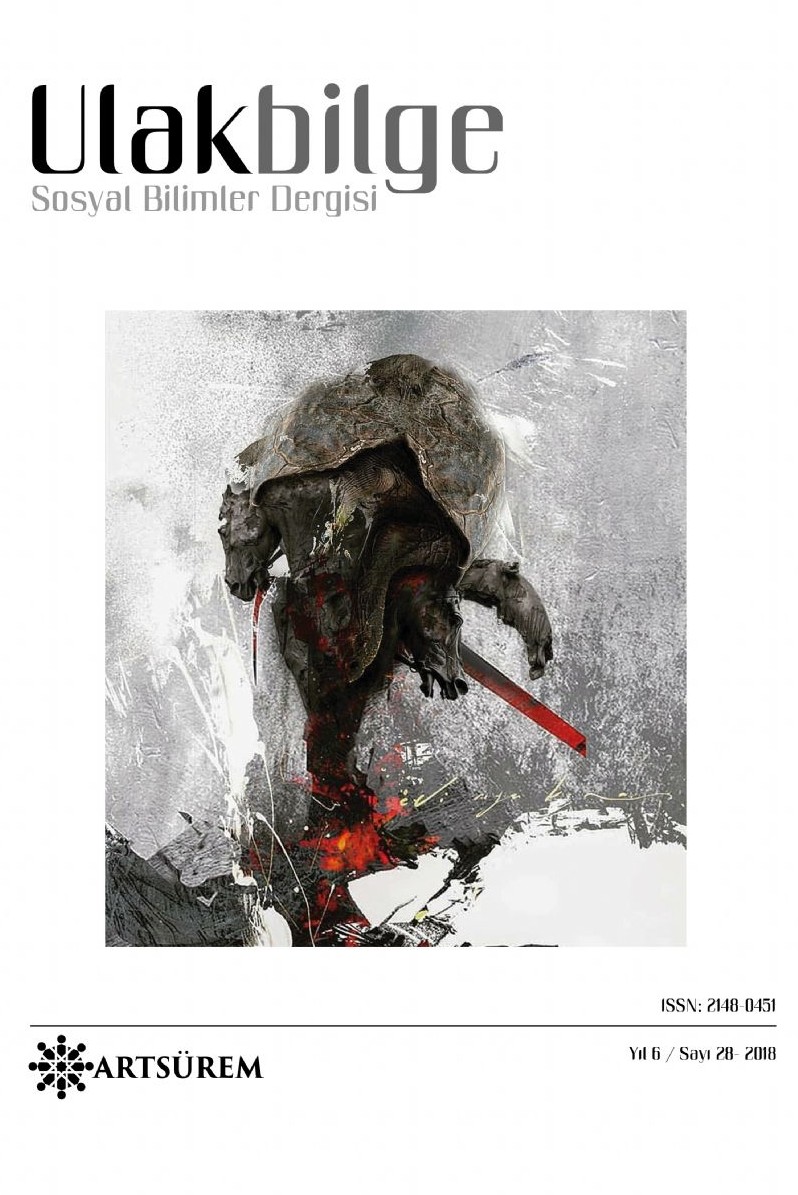COLOR SYMBOLISM IN SCENERY DESCRIPTIONS OF RYUNOSUKE AKUTAGAWA’S STORIES AND NOVELLAS
R. Akutagawa, color description, symbolism, landscape, image, psychological function, characters inner state
COLOR SYMBOLISM IN SCENERY DESCRIPTIONS OF RYUNOSUKE AKUTAGAWA’S STORIES AND NOVELLAS
R. Akutagawa, color description, symbolism, landscape, image, psychological function, characters inner state,
___
- Akutagawa, R. The works in four volumes. V.1.: The beginning of the way: Novellas of 1914-1919 / translated by V. Grivnina - Moscow: Polyaris, 1998a.
- Akutagawa, R. The works in four volumes. V.2.: The Maturity: Novellas of 1920-1923 / translated by V. Grivnina - Moscow: Polyaris, 1998b.
- Akutagawa, R. The works in four volumes. V.3.: The Results: Novellas of 1924-1927 / translated by V. Grivnina - Moscow: Polyaris, 1998c.
- Akutagawa, R. The works in four volumes. V.4.: The Philosophy of Life. Essays. Miniatures. Articles. Letters / translated by V. Grivnina - Moscow: Polyaris, 1998d.
- Gage, J. Color and Meaning Art Science and Symbolism. University of California Press. Berkeley and Los Angeles, 2000.
- Grivnin V.S. Akutagawa Ryunosuke. - Moscow: Moscow University Publish House,1980.
- Lippit, Seiji. M. The Disintegrated Machinery of the Modern: Akutagawa Ryunosuke’s Late Writings. The Journal of Asian Studies. Vol. 58 № 1 (Feb. 1999) pp. 27-50.
- Literary Encyclopedia of terms and definitions / edited by A.N. Nikolyukin. - Moscow: NPK " Intelvak", 2001.
- Symbolic Landscapes. Springer Science Business Media, 2009. - 389 pp.
- Symbols Dictionary. Edited by M.V. Adamchik. - Minsk: Harvest, 2010.
- The Materiality of Color: the Production, Circulation, and Application of Dyes and Pigments, 1400-1800. Andrea Feeser, Maureen Daly Goggin, Beth Fowkes Tobin. Ashgate Publishing, Ltd., 2012. - 333.
- The Story of a Head That Fell Off. Ryunosuke Akutagawa. Translated by Jay Rubin. Japan Focus, August 3, 2007.
- Ueda, Makoto. Modern Japanese Writers and the Nature of Literature. Stanford University Press, 1976. – p.47.
- ISSN: 2148-0451
- Başlangıç: 2015
- Yayıncı: Sanat ve Dil Araştırmaları Enstitüsü - SADA
GÜRCİSTAN'DA YAŞAYAN TÜRK FOLKLORUNUN TEMEL MOTİFLERİ
Анализ лексических эквивалентов в переводе рассказа Льва Н. Толстого «Чем люди живы»
COLOR SYMBOLISM IN SCENERY DESCRIPTIONS OF RYUNOSUKE AKUTAGAWA’S STORIES AND NOVELLAS
CİNSEL ÖĞELERİN İNTERNET REKLAMLARINDA KULLANIMI: “VESTEL 2014 DERİN DONDURUCU REKLAMLARI
ATATÜRK’ÜN KÜLTÜREL BAĞLAMDA SANATA BAKIŞI VE MODERN TÜRKİYE’DE SANATIN OLGUNLAŞMASI
Esra ALTINTAŞ YÜKSEL, Yücel GELİŞLİ
ART NOUVEAU AKIMINA 21.YÜZYIL PERSPEKTİFİNDEN BİR BAKIŞ
SAĞLIK AÇISINDAN GELENEKSEL METAL GRAVÜR TEKNİKLERİNE YENİ BİR ALTERNATİF NON-TOXIC METAL GRAVÜR
